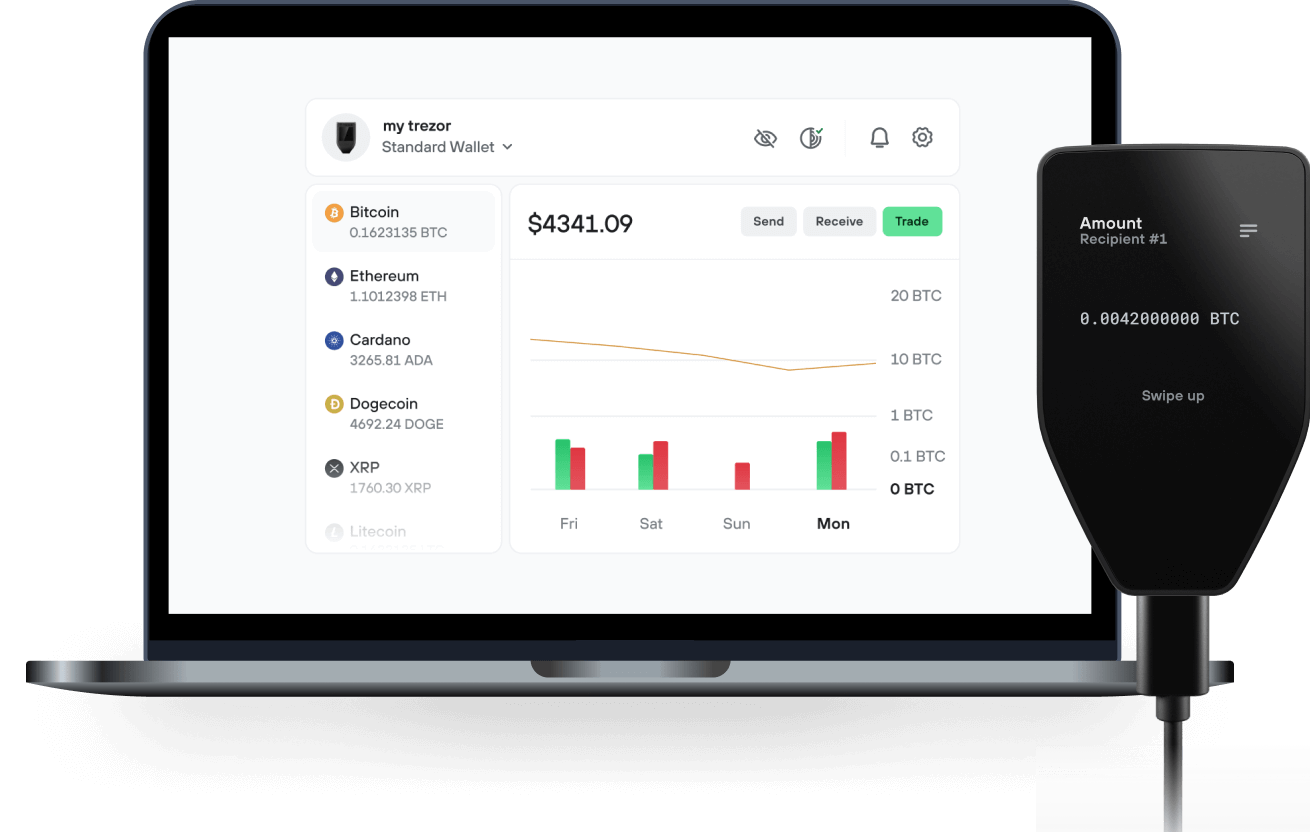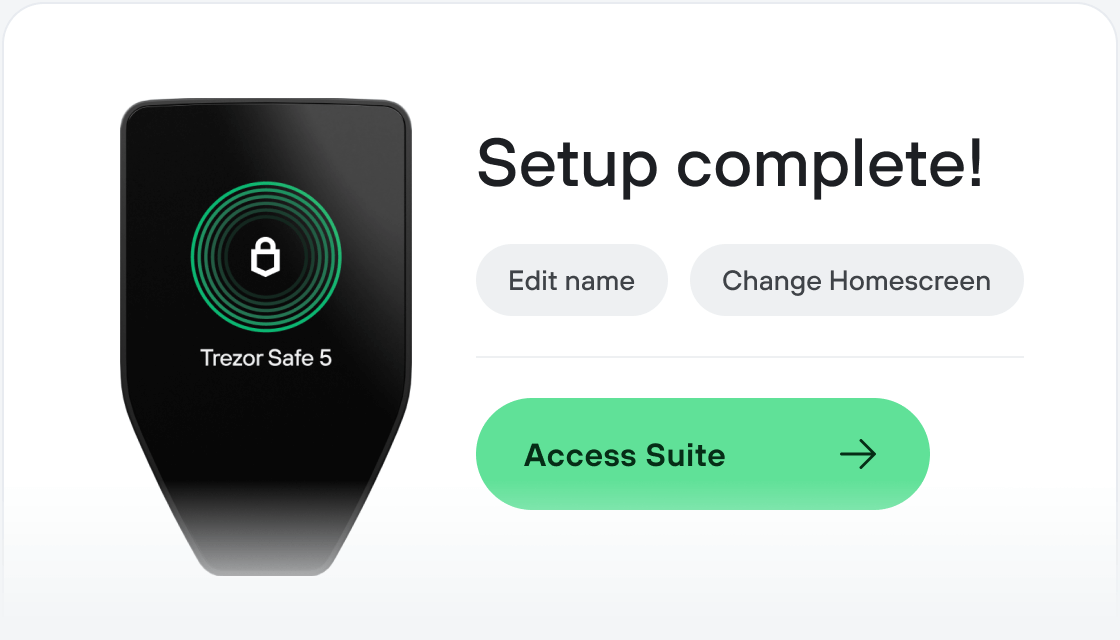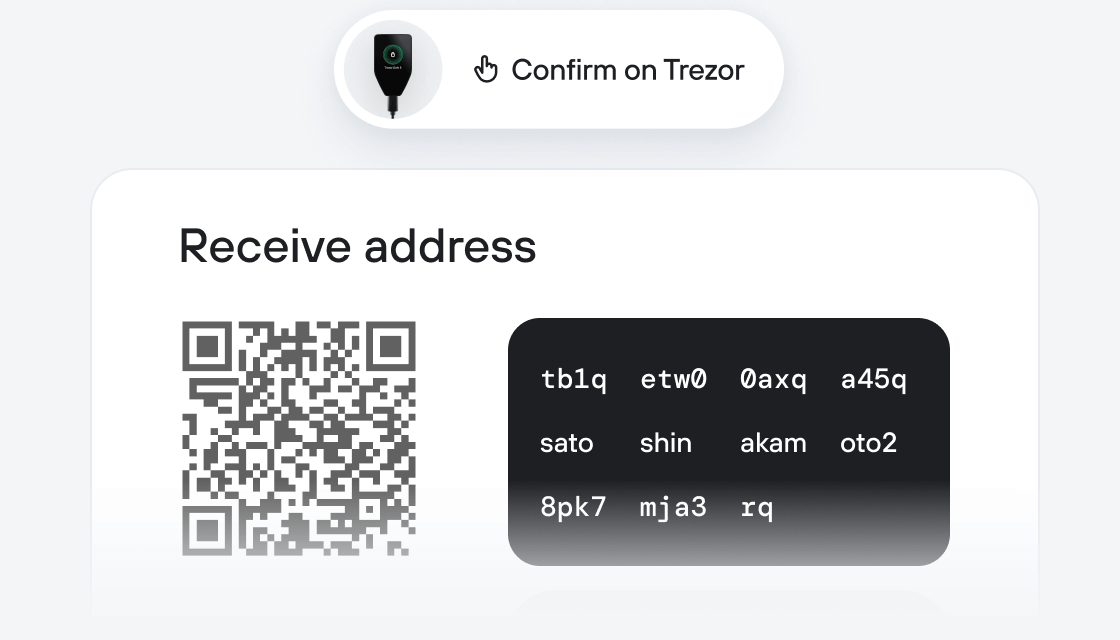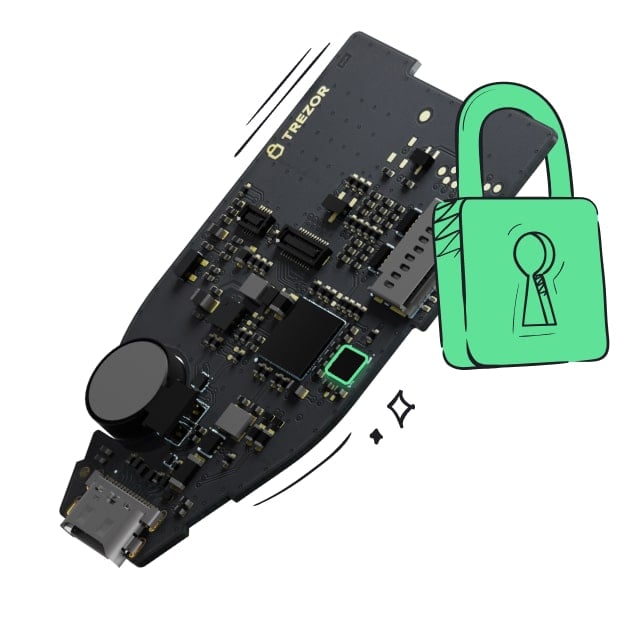Bezpečná a spolehlivá Livepeer peněženka
Převezměte kontrolu nad svými Livepeer aktivy s úplnou důvěrou v ekosystém Trezor.
- Zabezpečeno vaší hardwarovou peněženkou
- Použití s kompatibilními online peněženkami
- Důvěra více než 2 milionů zákazníků

Odesílejte a přijímejte své Livepeer s aplikací Trezor Suite

Odeslat a přijmout

Koupit a swapovat
Hardwarové peněženky Trezor podporující Livepeer
Synchronizace zařízení Trezor s aplikacemi peněženky
Spravujte své Livepeer pomocí hardwarové peněženky Trezor synchronizované s několika aplikacemi peněženek.
Trezor Suite
MetaMask
Rabby
Podporované Livepeer sítě
- Ethereum
- Harmony Shard 0
- Arbitrum One
Proč hardwarovou peněženku?
Přejděte do offline režimu s peněženkou Trezor
- Vlastníte 100 % svého krypta
- Vaše peněženka je 100% bezpečně offline
- Vaše data jsou 100 % anonymní
- Vaše krypto není vázáno na žádnou společnost
Online burzy
- Pokud burza zkrachuje, přijdete o všechno své krypto
- Burzy jsou cílem hackerů
- Vaše osobní údaje mohou být zneužity
- Své krypto reálně nevlastníte
Jak na LPT s peněženkou Trezor
Připojte svůj Trezor
Nainstalujte aplikaci Trezor Suite

Převeďte své LPT

Využijte svůj LPT naplno
Trezor bezpečně uchovává vaše LPT
 Chráněno pomocí Secure Element
Chráněno pomocí Secure ElementNejlepší obrana proti online i offline hrozbám
 Vaše tokeny, vaše kontrola
Vaše tokeny, vaše kontrolaAbsolutní kontrola každé transakce s potvrzením na zařízení
 Zabezpečení začíná u otevřeného zdroje
Zabezpečení začíná u otevřeného zdrojeDíky transparentnímu designu je vaše peněženka Trezor lepší a bezpečnější
 Jasná a jednoduchá záloha peněženky
Jasná a jednoduchá záloha peněženkyObnovení přístupu k digitálním aktivům pomocí nového standardu zálohování
 Důvěra od prvního dne
Důvěra od prvního dneBezpečnostní samolepky na obalech a zařízeních chrání neporušenost vašeho zařízení Trezor
The Livepeer project aims to deliver a live video streaming network protocol that is fully decentralized, highly scalable, crypto token incentivized, and results in a solution which can serve as the live media layer in the decentralized development (web3) stack. In addition, Livepeer is meant to provide an economically efficient alternative to centralized broadcasting solutions for any existing broadcaster. In this document we describe the Livepeer Protocol - a delegated stake based protocol for incentivizing participants in a live video broadcast network in a game-theoretically secure way. We present solutions for the scalable verification of decentralized work, as well as the prevention of useless work in an attempt to game the token allocations in an inflationary system.
The Livepeer Token (LPT) is the protocol token of the Livepeer network. But it is not the medium of exchange token. Broadcasters use Ethereum's Ether (ETH) to broadcast video on the network. Nodes who contribute processing and bandwidth earn ETH in the form of fees from broadcasters. LPT is a staking token that participants who want to perform work on the network stake in order to coordinate how work gets distributed on the network, and to provide security that the work will get done honestly and correctly. LPT has the following purposes:
It serves as a bonding mechanism in a delegated proof of stake system, in which stake is delegated towards transcoders (or validators) who participate in the protocol to transcode video and validate work. The token, and potential slashing that occurs due to protocol violation, is necessary in order to secure the network against a number of attacks. More below. It routes work through the network in proportion to the amount of staked and delegated token, essentially serving as a coordination mechanism.
It is a unit of account that is specific to the Livepeer ecosystem, which forms the basis of a SectorCoin concept, applicable to additional functionality to be introduced in the future. Services such as DVR, closed captioning, ad insertion/monetization, and analytics can all plug into the Livepeer ecosystem and potentially make use of the security provided by staking LPT.
An initial allocation of Livepeer Token will be distributed so that stakeholders can fulfill various roles in, and use the network, and then additional token will be issued according to algorithmically programmed issuance over time.
Following the conventions of Ethereum and many popular ERC20 tokens, LPT will be divisible by 10 ^ 18, with larger denominations such as the LPT itself intended to be used for user level transactions such as staking, and smaller denominations intended to be used for protocol accounting.